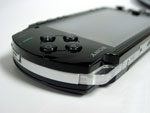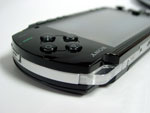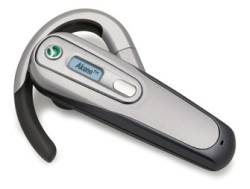 With an unconfirmed European release date of July 2005, many European gamers are certainly eyeing imported alternatives. They are however weary to how an imported system will perform in Europe and UK. I picked up a Sony PSP value pack during a recent trip to Japan and can report that using the console and one Japanese game has been very easy (and highly enjoyable).
With an unconfirmed European release date of July 2005, many European gamers are certainly eyeing imported alternatives. They are however weary to how an imported system will perform in Europe and UK. I picked up a Sony PSP value pack during a recent trip to Japan and can report that using the console and one Japanese game has been very easy (and highly enjoyable).
My main worry was whether the Japanese console supported English menus. I was happy to see that when you turn on the PSP for the first time, it let’s you choose between 15+ languages (English being one of them). From then on, you will not see a single reference to Japanese.
#PAGEBREAK#
I purchased the much raved about game Lumines. The game is 99% in English making it very easy to play. All in all I have seen two “pop-ups” in Japanese but they were not relevant to the game. Good news. There were several RPG games on the shelves that seemed to be in Japanese only so I avoided them.
Previous PS console games had region encoding which meant that a game purchased in USA would only work in North America. Sony decided to unlock the PSP to make it a truly portable system: if you travel from Europe to USA, you should be able to purchase games in the USA and be able to play them on the way back. With the recent PSP release in USA, you can now get hold of many new English titles.
The UMD movies are region encoded at the moment. The Japanese PSP is region 2 which suggests it is better suited for future European UMD movie titles. USA is region 1 as usual.
The PSP is delivered with an electricity adapter that supports 100-240 Volt and 50/60 Hertz. This means that it can be used in most (all?) countries provided you have a socket adapter. The end that plugs into the socket can even be removed and replaced with your local version.
#PAGEBREAK#
So is the Sony PSP any good? So far I have been mighty impressed with the big bright LCD screen, graphics, sound, photo and video viewing from memory stick, MP3 listening and WiFi support. Dead pixels seems to be a common problem so it is good being able to switch on the unit before purchasing it to test for any dead pixels. However 2-4 separated dead pixels are very difficult to spot during game play.
At the time of writing a PSP value pack was YEN24,000 which is roughly £120. It will be interesting to see how much the PSP will sell for in “rip-off” London when it finally launches.
Update
Comments have been closed. Please use the Sony PlayStation Portable PSP forum to ask any questions.
Tag: sony
Electronics shopping in Tokyo
 I have always thought of Japan as being the world capital for consumer electronics shopping; that there would be an amazing selection of gadgets at bargain prices to be found.
I have always thought of Japan as being the world capital for consumer electronics shopping; that there would be an amazing selection of gadgets at bargain prices to be found.
Some it was true, some was not.
Several very well stocked camera shops are located in the vicinity of the Shinjyuku station, more precisely on the west side of the station. Yodobashi Camera and Sakuraya are two good shops where you can even ask for a “best price” to try to lower the asking price.
It is said that if Yodobashi Camera does not stock the photographic item you are looking for, it is not available in Japan.
A great tip if you purchase a camera is to take it to the manufacturer’s local service shop where you can exchange the Japanese manual for other languages. Nikon has convenient service shops in Ginza and Shinjuku and the exchange took 5 minutes (great tip from Jeremy at Antipixel).
Mobile phones are well ahead of those in Europe and USA. Common phone features in Japan are 3-4 mega pixel cameras, TV receivers, high definition screens and broad band speeds.
No wonder there are always a couple of open phones around you; people watching the latest baseball game, showing each other high resolution photos or surfing some net for information.
Unfortunately there are almost no GSM phones for sale. I did find some but they were at rip off prices, bit outdated and most likely to lure clueless tourists.
Some shops announce with large signs that you can shop Duty Free. This means that the shop has the required license to sell items duty free. This also seems to mean that the shop can jack up the prices with 5-10%, sometimes negating any gains to the purchaser (you).
Check prices for the item you want both in a duty free shop and a regular back street shop and bring your passport as it is needed for duty free discounts.
Akihabara is the electronics district of Tokyo. If you are familiar with London, you can imagine it as Tottenham Court Rd on drugs.
It is easy to get distracted by the sheer amount of gadgets on offer. Very few of the staff speaks any English so it is best to be prepared by knowing exactly what items and model numbers you are looking for; also of their home prices.
Have a look around in a few shops to get an idea of the prices. Any shop will most likely match a (realistic) price you found in a different shop in order not to loose your business. This means you can do all your shopping in a single shop once you know the lowest prices.
With the current weak US dollar and Japanese language problems, I did not find any real bargains. Prices were always comparable with UK and never as low as US, Singapore or Hong Kong.
The highlight of electronics shopping in Tokyo is the sheer amount of items that the European market will never see. If you are on a tight budget, window shopping is an alternative.
If you happen to purchase too much and cannot fit it all in you bags, don’t fret. This is an opportunity to buy a state of the art suitcase that can be rolled around (not pulled) with one hand only.
Sony HBH-660 bluetooth headset review
 Yet another Bluetooth headset. I sure hope that this one sticks with me for a while.
Yet another Bluetooth headset. I sure hope that this one sticks with me for a while.
The main feature that sold me the Sony HBH-660 was the caller info.
The headset has a tiny 6 character LCD display. Besides showing battery status, volume level and other good information it also display a caller’s number or name if you have the number stored in your phone as a contact.
The headset comes with a strap so that you can wear it around your neck. Much better than loosing it in a pocket somewhere. While wearing the unit around your neck, the caller info is really handy.
The battery life has improved slightly from my previous HBH-60. This could also be just a perception due to the new battery indicator.
The HBH-660 is tiny bit heavier than the HBH-60 and HBH-600 but it did not result in any discomfort.
On a downside, my HBH-660 has worse voice quality than my old HBH-60 and HBH-30. This could be due a faulty device but I recommend you to try it out before purchase!
Hello J2ME World
With my recent upgrade to SonyEricsson T630, a new geek opportunity presented it self: to develop Java applications for my very own mobile. Priceless.
Because I am fairly familiar with Java and the fantastic, open source, IDE NetBeans it was easy to develop and deploy my first HelloJ2MEWorld application.
NetBeans has an extension module focused on J2ME development. Download it and NetBeans will be able to help you with your Midlets, JARs and obfuscation.
NetBeans is using the Sun J2ME SDK. If you want to be more device specific, I’d recommend you to download an SDK directly from the mobile maker you are interested in. Two obvious choices are SonyEricsson and Nokia.
Try out and debug your application on one of the supplied emulators.
The last step is to transfer your application to your mobile. You have a choice between infrared, bluetooth, USB cable and Over-the-air (OTA). Since I am developing on a IR enabled laptop, ir was the best option for me.
First application that came to mind for developing was of course a mobile blogging tool. A quick search on Google returned the just started open source project MIDLog. So instead of starting from scratch and probably duplicating all work done in MIDLog, I am hoping to contribute to MIDLog.
The J2ME world is crowded with two main MIDP versions, WTK versions and various JSRs (Java Specification Requests). While many exciting features are planned for future version of J2ME, todays devices are very limited.
Example, the T630 supports the “new” multimedia API (MMAPI – JSR 135) but Sony has chosen to support the sound part only. This means that there is no support for image capturing and I suspect this will make it very difficult to develop a mobile blog tool capable of posting images.
Sony Ericsson HBH-35 vs HBH-60
Sony Ericsson HBH-35 HBH-60 blue tooth mobile phone


